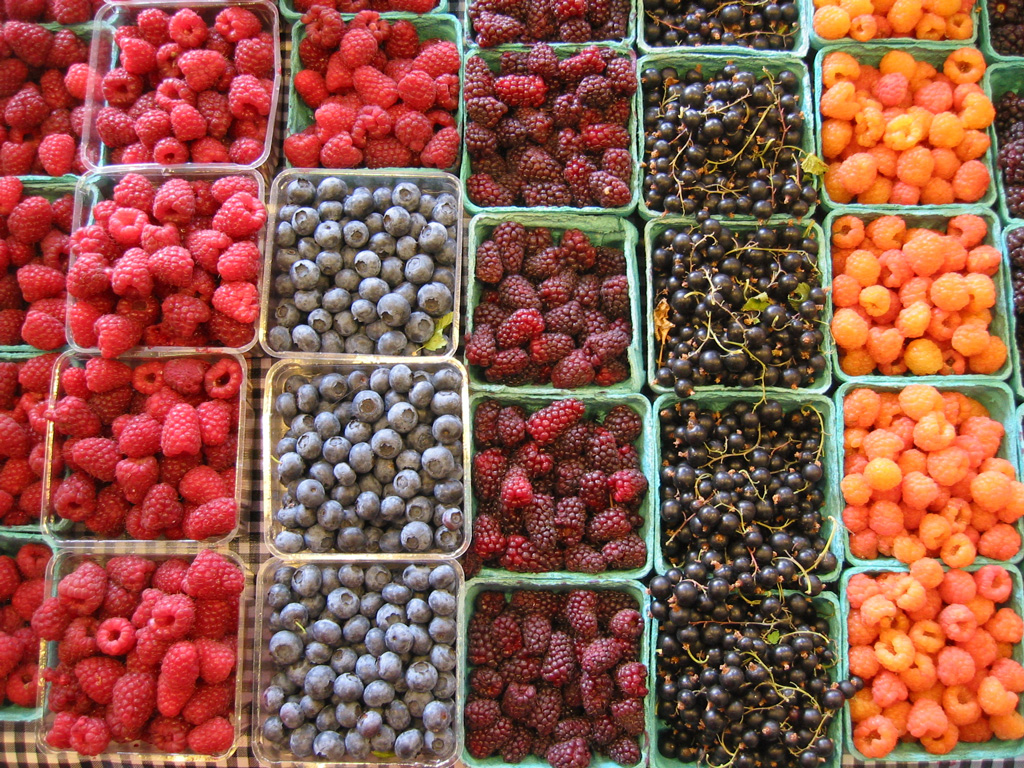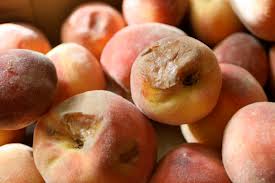- Fruit is not bad if seasonal and local.
- Limit yourself to a maximum of 1 serving of fresh local seasonal fruit per day – particularly if you are trying to lose weight.
- It still has fibre content and slows the uptake of fructose.
- You can get all the nutrients in fruit from vegetables with a lot lower fructose content.
IDEAS
The chart below is a reasonable summary of common fruits and their Fructose composition. Try the whole fruit as the skin has more fibre. Just wash them well. Who knows how many chemicals are on the surface.
On estimate – 2 grams of Fructose is the equivalent of 1 teaspoon of sugar. Be aware!
There is a simple turnaround to easy weight control and health by elimination or at least limiting your total Fructose intake to less than 10 grams per day. Possibly even less if you can do it.
|
|
Is Fruit Good or Bad For You?
Gary Fettke – Science Week 2015 Lecture Debate – my perspective in the debate.
Fruit has been ‘advertised’ to us as being good for us.
It is marketed to us in nature and by the food industry. Is it really good for us or are we just succumbing to fruit and the food industry for their benefit, not ours?
Many groups including dieticians, weight reduction schemes and some advisory bodies keep pushing the fruit barrow. The ‘modern’ fruit barrow is not what it was. It is laden with a variety of fruit that cannot be local.
I have friends who can remember getting a single orange as a child in their Christmas stocking as a special treat.
I have nothing against fruit and still believe that there is plenty of goodness in fruit. To me, however, it should be up to ONE piece of LOCAL and SEASONAL fruit per day.
It is better than a lot of refined sugar in food but fruit still has a fair load of fructose. And that equals a load that can be reduced particularly if you are trying to lose weight.
I believe fruit makes you hungry. How many of you can eat just one grape if you have a bunch in front of you? Just try doing one strawberry. Even an apple can leave you hungry. That’s what they are designed to do. There are about 3 teaspoons of sugar in each banana and orange, a couple in apples, peaches and nectarines, about 1 per strawberry or grape.
The natural source of sugar is fruit and we are meant at a primitive level to search for that sweetness generally at the end of summer, gorge upon the fruit and elegantly metabolise it to fat for winter storage. Simple as that.
The trouble is we now have some form of sugar 3 times a day, 365 days a year and wonder why we are making fat every day along with its metabolic consequences.
Most modern fruit has been ‘designed’ for a higher sugar content, lower fibre content , with a thinner skin and greater water content to make it ‘juicy’. This is all about marketing, transportability, shelf life and profit.
There is nothing ‘natural’ about bananas in Tasmania or stone fruit in Northern Queensland at any time of the year. Most fruit juices have about the same amount of sugar in them as Coca Cola or Lemonade. Even those smoothies from juice bars are about the same but at least still have the fibre within them.
My issue is not with eating whole fruit as much as it is with the quantity and frequency that we currently take in. It is juiced, concentrated, dried and added to a variety of foods and marketed as ‘natural sugar’. The concentrated sugar and lower fibre content with additional processing mean to me that Modern fruit is different.
Have you noticed that the fruit that falls off your trees in your backyard is rotten within 24-48 hours whereas the ‘Modern’ fruit you buy from the supermarket is still fresh a week to 10 days afterwards? This is not the fruit of my childhood.
Fruit has been around for billions of years but most of our early exposure as cavemen was around the tropics in Africa 50000 – 60000 years ago. My reading around this topic points to a variety of fruits being competed for by humans, birds, animals and insects. As humans we probably learned as much from observing the animals.
The wild fruits varied in availability, size and taste depending on the tree, soil type and obvious environmental factors. The skins were often thicker and the fruit dryer. Then there was the aspect of transport and availability. No racing down to the supermarket and filling up the SUV with juicy, perishable fruit from another country.
Modern fruit production includes soil management, controlled environments and a variety of chemicals to produce the quantity and consistency required for the modern supermarket. I have heard that the fruit has to unblemished. That’s just not ‘natural’.
Our current fruit production also uses varying degrees of chemicals. Once harvested in commercial enterprises it is often coated with chemical to protect the outer skin, then placed in vacuum storage rooms rich in oxygen and then cooled down to a core temperature of about 0 degrees. This process obviously varies from fruit to fruit and location but a process occurs. The fruit is then stored in cool rooms and distributed on as required.
Many fruits are stored for 12 months before reaching our tables.
Remember that it is nearly impossible to avoid Sugar and Fructose in our diet. The trick is to recognise where it is, what it is and minimise it over the long term.
Support your local farming community and buy local, seasonal and fresh.
I came across this blog from Denise Minger from 2011 who writes about ancient fruits. You might be interested.
http://rawfoodsos.com/2011/05/31/wild-and-ancient-fruit/
Facebook Blog 13 March 2013
We are at that time of year when our LOCAL fruit trees are having their SEASONAL crop.
Have you noticed that the fruit that falls off your trees in your backyard is rotten within 24-48 hours whereas the ‘Modern’ fruit you buy from the supermarket is still fresh a week to 10 days afterwards?
There is nothing ‘natural’ about bananas in Tasmania or stone fruit in Northern Queensland at any time of the year. Most fruit juices have about the same amount of sugar in them as Coca Cola or Lemonade. Even those smoothies from juice bars are about the same but at least still have the fibre within them.
I have nothing against fruit and believe that there is plenty of goodness in fruit but to me, it should be up to ONE piece of LOCAL and SEASONAL fruit per day. Fruit when eaten whole has fibre in it which slows the absorption of fructose and is good for the bowel. There are other nutrients which are useful but that don’t have to come from fruit.
Fresh vegetables can provide virtually all of the same nutrients and fibre without the Fructose load. We just prefer fruit to veggies because we like the sweetness more. Simple as that.
Fruit varieties are now being designed with more sugar and less fibre to improve transportability and shelf life. It’s all about increasing profit. Nothing against that either except if it comes at another cost.
Modern fruit production uses varying degrees of chemicals. Once harvested in commercial enterprises it is often coated with chemical to protect the outer skin, then placed in vacuum storage rooms rich in oxygen and then cooled down to a core temperature of about 0 degrees. This process obviously varies from fruit to fruit and location but a process occurs. The fruit is then stored in cool rooms and distributed on as required.
My issue is not with eating whole fruit as much as it is with the quantity and frequency that we currently take in. It is juiced, concentrated, dried and added to a variety of foods and marketed as ‘natural sugar’. The concentrated sugar and lower fibre content with additional processing mean to me that Modern fruit is different.
I regularly get asked about which’ fruit is best. This is a guide only and especially for those trying to lose weight – ONE piece of LOCAL and SEASONAL fruit per day.
If you are eating out of season then look at Avocado, Berries and Tomato. These are often lower in Fructose. Other whole fruits (not dried) are not bad and if you eat them with the skin (well washed) then you get the fibre as well.
There are about 3 teaspoons of sugar in each banana and orange, a couple in apples, peaches and nectarines, about 1 per strawberry. Just think about it.
Remember that it is nearly impossible to avoid Sugar and Fructose in our diet. The trick is to recognise where it is, what it is and minimise it over the long term.
Please add information by going to Contribute to NoFructose.com
MORE INFORMATION
You have to be nuts to not enjoy nuts!

Just out today from the New England Journal of Medicine. November 21 2013
The regular consumption of nuts most days over 30 years is associated with a lower death rate, lower heart attack and respiratory disease rate as well as a lower cancer rate.
They also acknowledge that this group were leaner, less likely to smoke, more likely to exercise, and more likely to use multivitamin supplements and that they also consumed more fruits and vegetables and drank more alcohol.
A thumbs up for a handful of nuts each day
Take the video for the summary.
http://www.nejm.org/action/showMediaPlayer?doi=10.1056%2FNEJMoa1307352&aid=NEJMoa1307352_attach_1&area
http://www.nejm.org/doi/full/10.1056/NEJMoa1307352?query=TOC#t=abstract
More to follow


